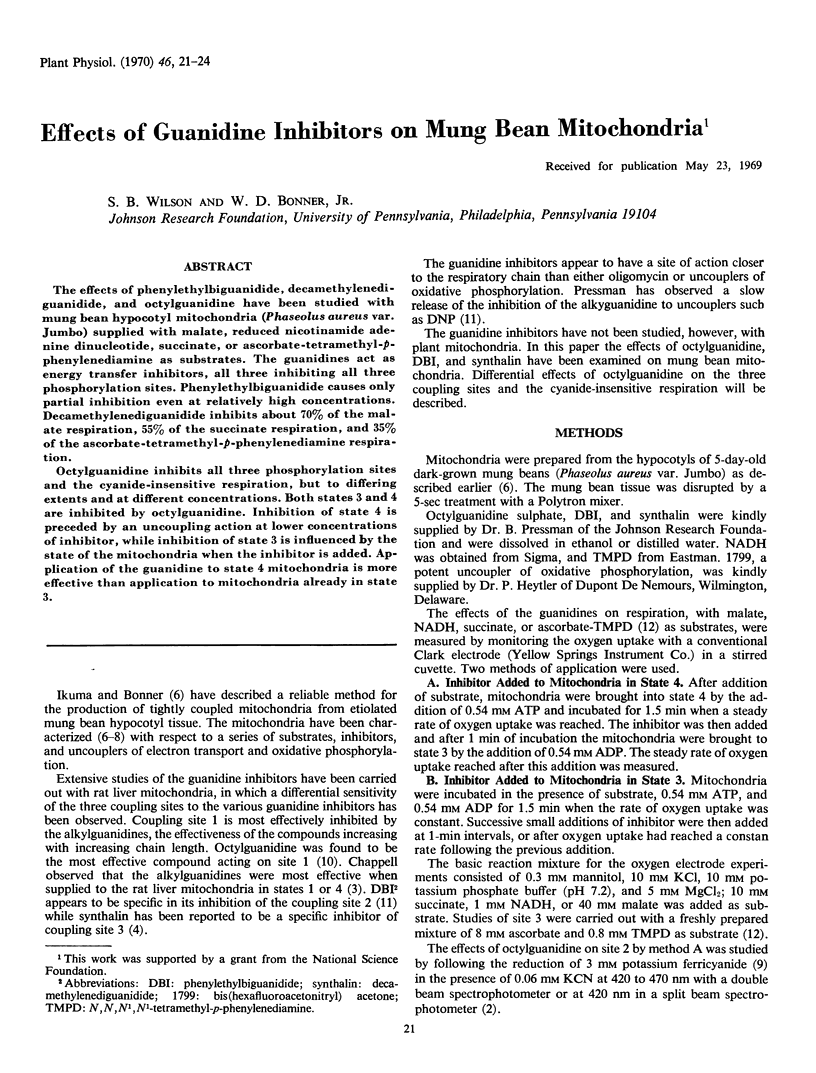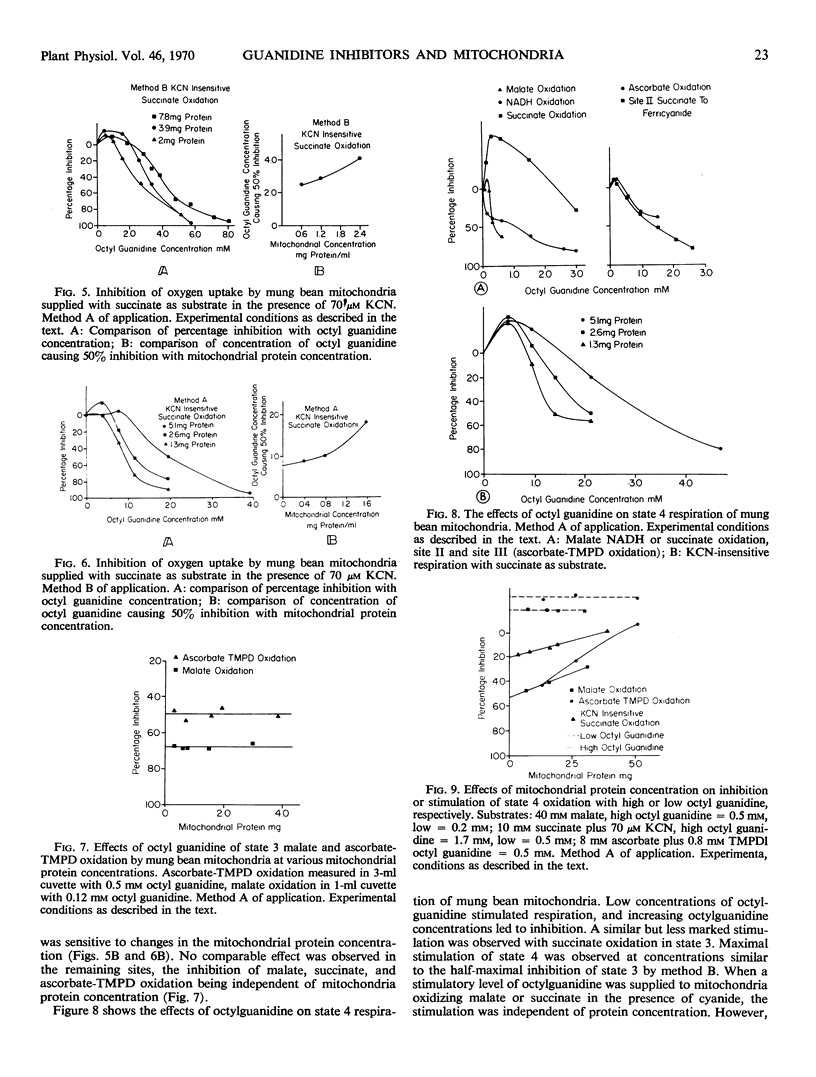Abstract
The effects of phenylethylbiguanidide, decamethylenediguanidide, and octylguanidine have been studied with mung bean hypocotyl mitochondria (Phaseolus aureus var. Jumbo) supplied with malate, reduced nicotinamide adenine dinucleotide, succinate, or ascorbate-tetramethyl-p-phenylenediamine as substrates. The guanidines act as energy transfer inhibitors, all three inhibiting all three phosphorylation sites. Phenylethylbiguanidide causes only partial inhibition even at relatively high concentrations. Decamethylenediguanidide inhibits about 70% of the malate respiration, 55% of the succinate respiration, and 35% of the ascorbate-tetramethyl-p-phenylenediamine respiration.
Octylguanidine inhibits all three phosphorylation sites and the cyanide-insensitive respiration, but to differing extents and at different concentrations. Both states 3 and 4 are inhibited by octylguanidine. Inhibition of state 4 is preceded by an uncoupling action at lower concentrations of inhibitor, while inhibition of state 3 is influenced by the state of the mitochondria when the inhibitor is added. Application of the guanidine to state 4 mitochondria is more effective than application to mitochondria already in state 3.
Full text
PDF



Selected References
These references are in PubMed. This may not be the complete list of references from this article.
- CHAPPELL J. B. The effect of alkylguanidines on mitochondrial metabolism. J Biol Chem. 1963 Jan;238:410–417. [PubMed] [Google Scholar]
- Guillory R. J., Slater E. C. The action of substituted guanidines on mitochondrial respiration and on the ADP-ATP exchange reaction. Biochim Biophys Acta. 1965 Aug 24;105(2):221–232. doi: 10.1016/s0926-6593(65)80147-3. [DOI] [PubMed] [Google Scholar]
- HACKETT D. P., RICE B., SCHMID C. The partial dissociation of phosphorylation from oxidation in plant mitochondria by respiratory chain inhibitors. J Biol Chem. 1960 Jul;235:2140–2144. [PubMed] [Google Scholar]
- Ikuma H., Bonner W. D. Properties of Higher Plant Mitochondria. I. Isolation and Some Characteristics of Tightly-coupled Mitochondria from Dark-grown Mung Bean Hypocotyls. Plant Physiol. 1967 Jan;42(1):67–75. doi: 10.1104/pp.42.1.67. [DOI] [PMC free article] [PubMed] [Google Scholar]
- Ikuma H., Bonner W. D. Properties of Higher Plant Mitochondria. II. Effects of DNP, m-Cl-CCP, and Oligomycin on Respiration of Mung Bean Mitochondria. Plant Physiol. 1967 Oct;42(10):1400–1406. doi: 10.1104/pp.42.10.1400. [DOI] [PMC free article] [PubMed] [Google Scholar]
- Ikuma H., Bonner W. D. Properties of Higher Plant Mitochondria. III. Effects of Respiratory Inhibitors. Plant Physiol. 1967 Nov;42(11):1535–1544. doi: 10.1104/pp.42.11.1535. [DOI] [PMC free article] [PubMed] [Google Scholar]
- Wilson S. B., Bonner W. D. Energy-linked Functions of Submitochondrial Particles Prepared from Mung Bean Mitochondria. Plant Physiol. 1970 Jul;46(1):31–35. doi: 10.1104/pp.46.1.31. [DOI] [PMC free article] [PubMed] [Google Scholar]


